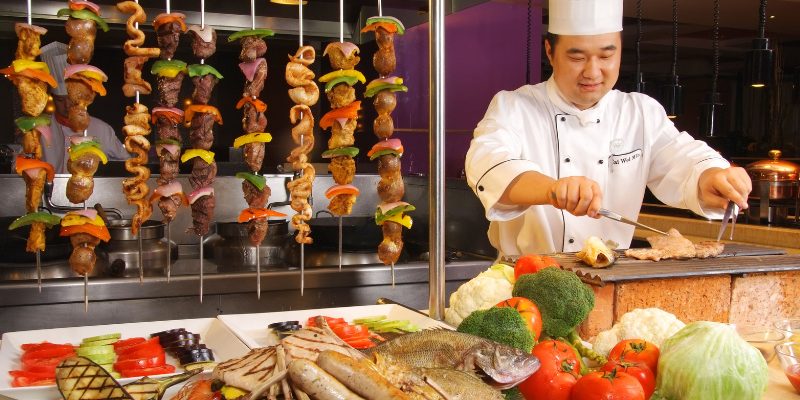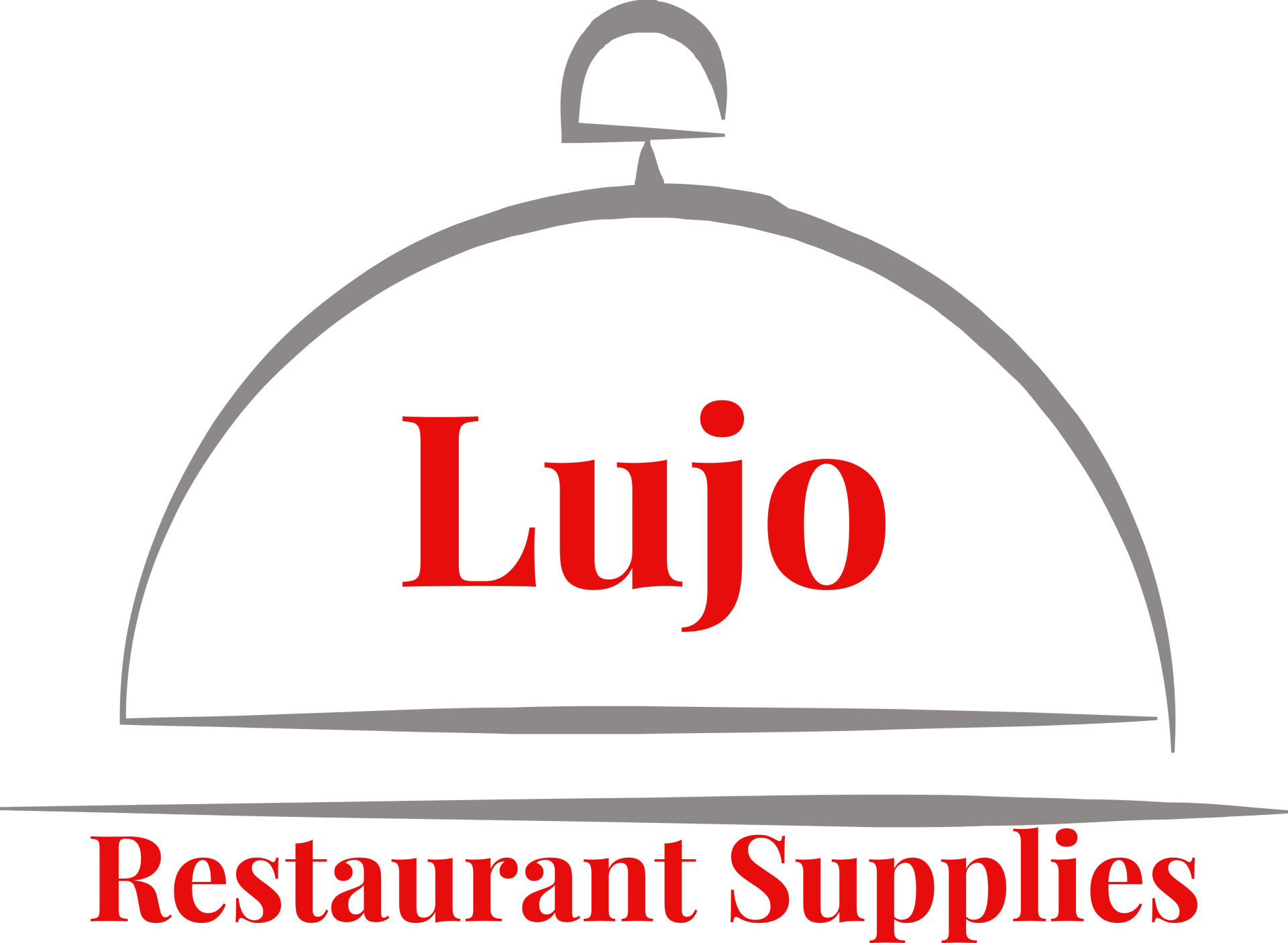As we look ahead to the future of the restaurant industry in 2024, it is clear that significant changes and trends are on the horizon.
Table of Contents
ToggleFrom embracing technological innovations to navigating supply chain disruptions, restaurant owners must be prepared to adapt to a rapidly evolving landscape.
In this blog post, we will explore some of the key trends that are shaping the restaurant industry and discuss strategies for success in the coming year.

Embracing Technological Innovations in Service and Management
The landscape of the restaurant industry is undergoing a transformative shift, with technological innovations at the forefront of this evolution.
In the coming year, the integration of digital solutions will be paramount for restaurant owners aiming to elevate service levels and optimize management practices.
A move towards digital ordering and payment systems is not merely a trend, but a necessary step to enhance operational efficiency and customer satisfaction.
These systems not only streamline the ordering process but also minimize errors and wait times, leading to a smoother dining experience for patrons.
In the kitchen, advanced automation tools are revolutionizing food preparation and delivery.
Robotics and AI-driven appliances can assist in creating consistent, high-quality dishes while reducing the workload on kitchen staff.
This integration of technology extends beyond the kitchen to inventory management, where automated systems can monitor stock levels, predict reordering times, and even suggest menu adjustments based on ingredient availability.
Investment in these technological advancements is more than an operational decision; it’s a strategic move toward building a resilient and adaptable business model.
As restaurant owners look to the future, leveraging these innovations will be crucial in staying competitive in a market where efficiency, sustainability, and customer experience are key differentiators.
By harnessing the power of technology, restaurants can not only navigate the challenges of today but also set the stage for success in the evolving landscape of 2024 and beyond.
Sustainable Practices as a Core Business Strategy
Sustainable practices within the restaurant industry are evolving from mere environmental considerations to central components of business strategy.
As we advance into 2024, the commitment to sustainability has become a defining factor for success, driving consumer choices and shaping industry standards.
The imperative for restaurant owners to incorporate sustainable methods is twofold; not only does it resonate with a growing consumer base that values eco-conscious dining experiences, but it also contributes to operational efficiencies that can positively impact the bottom line.
Adopting sustainable practices involves a comprehensive approach that extends beyond the kitchen.
It requires a deep dive into sourcing policies, with a pivot towards local and seasonal ingredients that not only reduce carbon footprint but also support local communities and economies.
Energy conservation efforts, such as utilizing energy-efficient restaurant kitchen appliances and lighting, further reflect a restaurant’s commitment to minimizing its environmental impact.
The drive towards sustainability is catalyzing innovation within the industry.
From zero-waste cooking techniques that creatively repurpose food scraps to the integration of biodegradable packaging for takeout orders, these initiatives not only reduce environmental harm but also showcase a restaurant’s innovation and commitment to the planet.
In essence, the journey towards sustainability is not a standalone endeavor but an integrated business strategy that aligns with consumer expectations and environmental responsibility.
As we look towards 2024, the adoption of sustainable practices is not just beneficial—it’s essential for restaurants aiming to thrive in a conscientious market.

The Rise of Plant-Based and Lab-Grown Menu Options
As the culinary landscape progresses into 2024, the ascendance of plant-based and lab-grown menu options marks a significant shift in consumer dining preferences.
This evolving trend underscores an increased collective consciousness around health, environmental sustainability, and ethical food sourcing, guiding restaurant owners to reconsider their menu offerings.
The appeal of plant-based meals and lab-grown alternatives extends beyond the traditional vegetarian or vegan clientele, capturing the interest of a broad spectrum of consumers who are exploring these options for their health benefits, reduced environmental impact, and curiosity about innovative food technologies.
The incorporation of plant-based and lab-grown proteins into restaurant menus is not just a response to a trend but an adaptation to a changing societal norm.
It represents an opportunity for culinary creativity and differentiation in a competitive market.
By diversifying their menu to include these alternatives, restaurants can attract a wider audience, from environmentally conscious diners to those intrigued by the novelty of lab-grown meats.
Moreover, this shift also presents an opportunity to address some of the supply chain vulnerabilities that have come to light in recent years.
Plant-based and lab-grown options can offer more stable pricing and availability, mitigating some of the risks associated with traditional animal protein sourcing.
As we move into 2024, embracing these alternatives will not only cater to the evolving palates of consumers but also contribute to the resilience and adaptability of the restaurant industry in facing future challenges.
Navigating the Challenges of Supply Chain Disruptions
In the dynamic world of the restaurant industry, the ability to navigate supply chain disruptions with agility and foresight stands as a critical determinant of success for 2024.
The challenges presented by fluctuations in the availability of ingredients and delays in the transportation of restaurant equipment require a proactive approach to supply chain management.
Building robust relationships with a diverse network of restaurant kitchen suppliers emerges as a strategic necessity, offering restaurants a lifeline in times of scarcity.
This network not only provides alternate sourcing options but also ensures a degree of flexibility in menu offerings, enabling restaurants to adapt to sudden market changes without compromising on quality or customer satisfaction.
Implementing advanced inventory management technologies plays a pivotal role in preempting and mitigating supply chain disruptions.
These systems offer real-time insights into stock levels, consumption patterns, and potential bottlenecks, facilitating timely decisions and adjustments.
Furthermore, engaging in collaborative forecasting with restaurant suppliers enhances the visibility of demand trends, allowing both parties to adjust their production and distribution plans accordingly.
Amidst the unpredictability of the supply chain landscape, fostering a culture of innovation within the restaurant’s operational strategy is essential.
Exploring alternative ingredients and adopting versatile menu designs can not only circumvent short-term supply issues but also open avenues for culinary creativity and differentiation in the market.
As we step into 2024, the capacity to navigate the complexities of supply chain disruptions with resilience and strategic planning will mark a cornerstone of success for restaurant owners in an ever-evolving industry.
The Evolution of Dining Experiences in a Post-Pandemic World
The landscape of dining has been indelibly altered by the COVID-19 pandemic, setting a new trajectory for the restaurant industry as we venture into 2024.
This evolution is characterized by a heightened emphasis on hygiene, flexibility, and personalized service, elements now deemed essential for catering to the post-pandemic diner.
Innovations such as contactless transactions have transitioned from emergency responses to standard practice, offering a seamless and secure dining experience.
Similarly, the integration of digital menus and mobile ordering systems has not only catered to health concerns but also elevated the convenience and efficiency of service, aligning with the expectations of tech-savvy consumers.
Furthermore, the reimagining of physical dining spaces has become a focal point, with outdoor seating and well-ventilated interiors becoming more prominent, reflecting a shift towards safety without compromising on ambiance.
Restaurants are also crafting more immersive and engaging dining experiences through the use of technology, from augmented reality menus to interactive dining events, catering to a growing desire for novelty and escapism in dining out.
These adaptations are not merely reactions to the past but proactive steps towards a future where flexibility, innovation, and attention to diner preferences define the essence of the dining experience.
The Growing Importance of Data-Driven Decision Making
In the ever-evolving restaurant industry, the ability to harness and interpret data has become a critical factor for staying ahead of the curve.
As we move into 2024, data-driven decision-making transcends from being a competitive edge to a fundamental necessity for restaurant owners.
Utilizing sophisticated data analytics tools enables a deeper understanding of customer behavior, preferences, and trends, thereby empowering restaurateurs to tailor their offerings with precision.
This approach is instrumental in optimizing menu selections, enhancing customer engagement strategies, and improving overall service delivery.
Moreover, the strategic application of data analytics facilitates efficient resource management, from inventory to staffing, ensuring that operations are streamlined and cost-effective.
By analyzing sales patterns and customer feedback, restaurants can identify high-demand dishes, forecast future trends, and adjust their procurement accordingly, addressing one of the key pain points of finding reliable suppliers and managing high costs.
In the dynamic landscape of 2024, embracing a data-driven culture not only propels restaurants towards greater profitability and customer satisfaction but also equips them with the agility to respond to emerging challenges and opportunities.
The shift towards data-centric operational models is indispensable for navigating the complexities of the modern restaurant industry, enabling owners to make informed, strategic decisions that drive growth and resilience.

The Impact of Economic Trends on Consumer Spending
Understanding the nuances of economic trends is essential for navigating their impact on consumer spending within the restaurant industry in 2024.
As the broader economy ebbs and flows, so does the discretionary spending of diners.
This shifting landscape requires restaurant owners to be highly adaptable and perceptive.
In periods of economic prosperity, consumers may be more inclined towards premium dining experiences, showcasing a willingness to indulge.
Conversely, economic downturns often see a tightening of consumer budgets, with a marked preference for value-driven dining options.
To stay relevant and appealing to customers across these economic cycles, restaurants must tailor their pricing strategies and culinary offerings.
This may involve introducing a range of pricing options to accommodate varying budgets or offering special promotions and value meals during leaner economic times to maintain customer interest and traffic.
Additionally, emphasizing the quality and value proposition of the dining experience can help mitigate the effects of price sensitivity among consumers.
The ability to swiftly adjust to these economic indicators can make the difference between thriving and merely surviving in the competitive landscape of 2024.
Restaurants that position themselves as responsive and attuned to the economic realities of their customers will navigate these challenges with greater agility, ensuring a consistent and loyal customer base regardless of the prevailing economic conditions.
Strategies for Attracting and Retaining Talent in a Competitive Market
In the bustling world of the restaurant industry, the competition for securing top talent has become increasingly fierce as we move into 2024.
With a landscape shaped by evolving workforce expectations and a competitive job market, the emphasis on innovative strategies to attract and retain skilled employees is paramount.
Establishing a workplace culture that values diversity, inclusivity, and employee well-being is essential.
This environment encourages staff loyalty and can significantly enhance a restaurant’s appeal to prospective employees.
Additionally, offering a clear path for career progression, including access to training and development programs, signals a commitment to employee growth, making your establishment a more attractive place to work.
Flexible scheduling and recognizing the importance of work-life balance further resonate with today’s workforce, addressing their needs and priorities.
Implementing these strategies not only fosters a motivated and committed team but also positions your restaurant as a desirable employer in a highly competitive market.
Engaging with your team in meaningful ways, recognizing their contributions, and investing in their professional development are key steps in building a resilient and thriving restaurant workforce in 2024.
Navigating the Regulatory Landscape in 2024
In 2024, adeptly managing the intricacies of the regulatory environment will be crucial for the restaurant industry.
The shifting sands of health and safety standards, along with updates in labor laws and taxation, present a maze that demands careful navigation.
Proactive engagement with these changes is essential.
Establishments must commit to ongoing education, leveraging legal expertise, and integrating compliance into their operational ethos to sidestep potential pitfalls.
This forward-looking approach enables restaurants to adapt fluidly, maintaining not just legal compliance but also operational excellence and public trust.
Keeping a pulse on regulatory shifts ensures that your restaurant not only meets current standards but is also prepared for future adaptations, securing its place in the competitive landscape of tomorrow.

